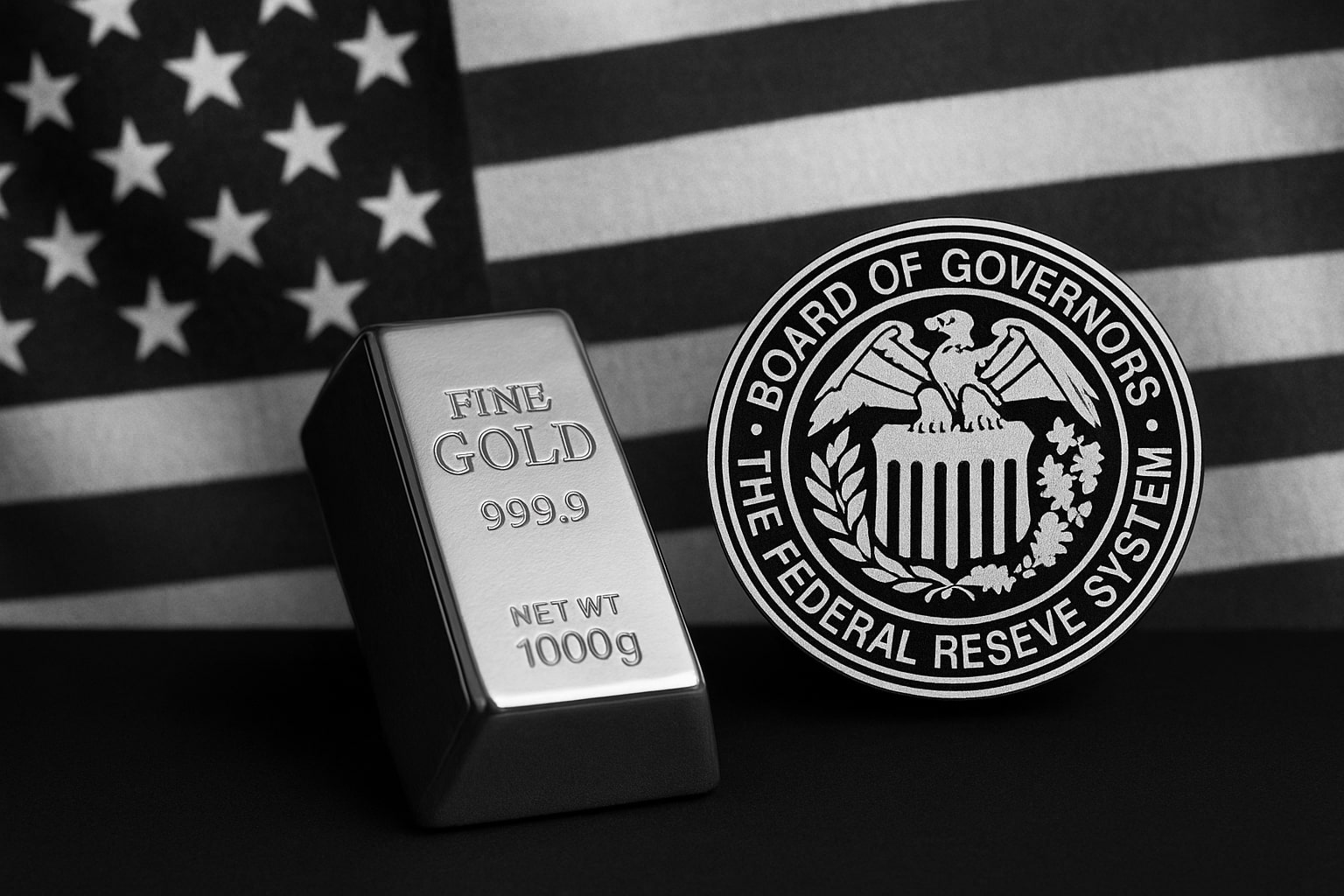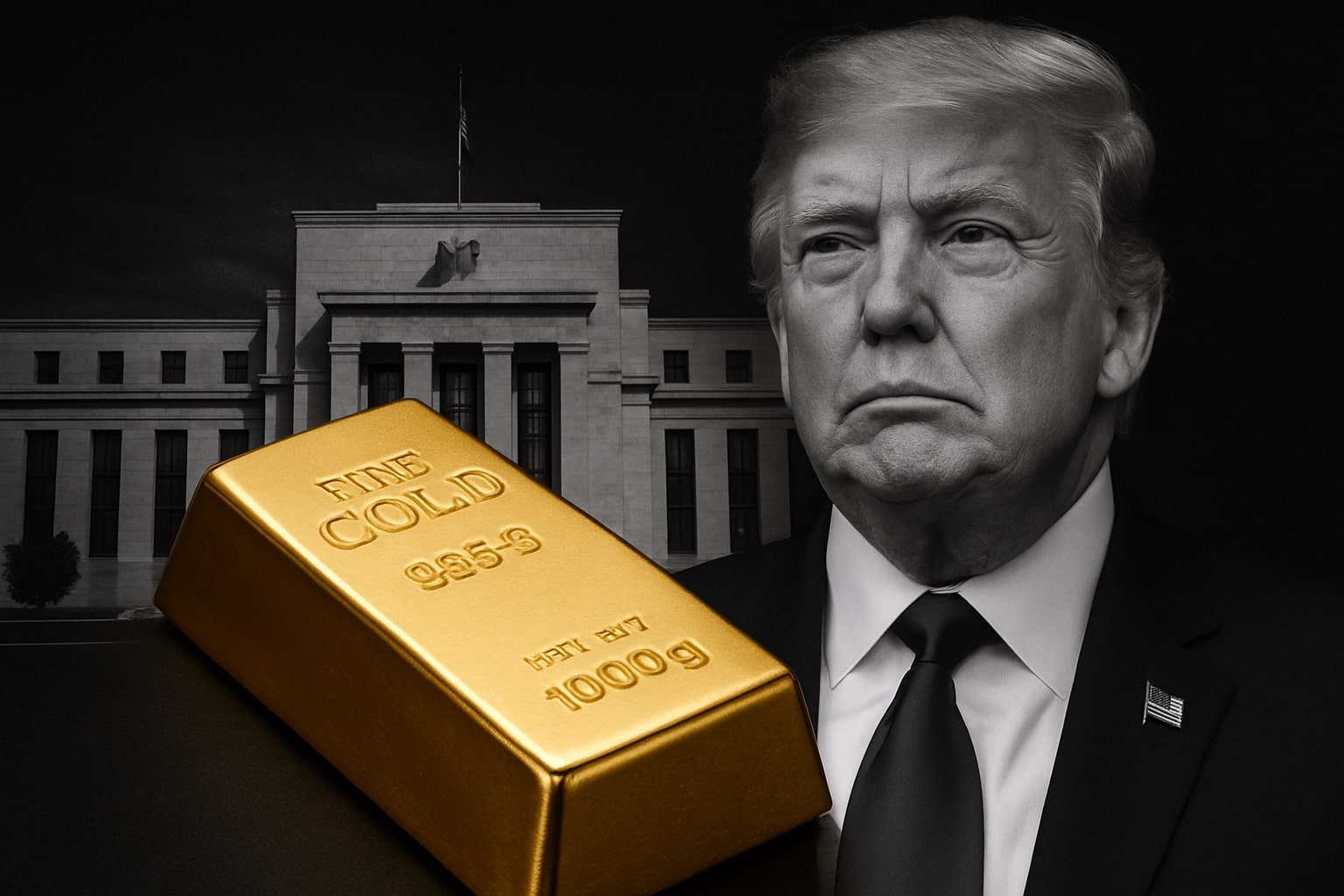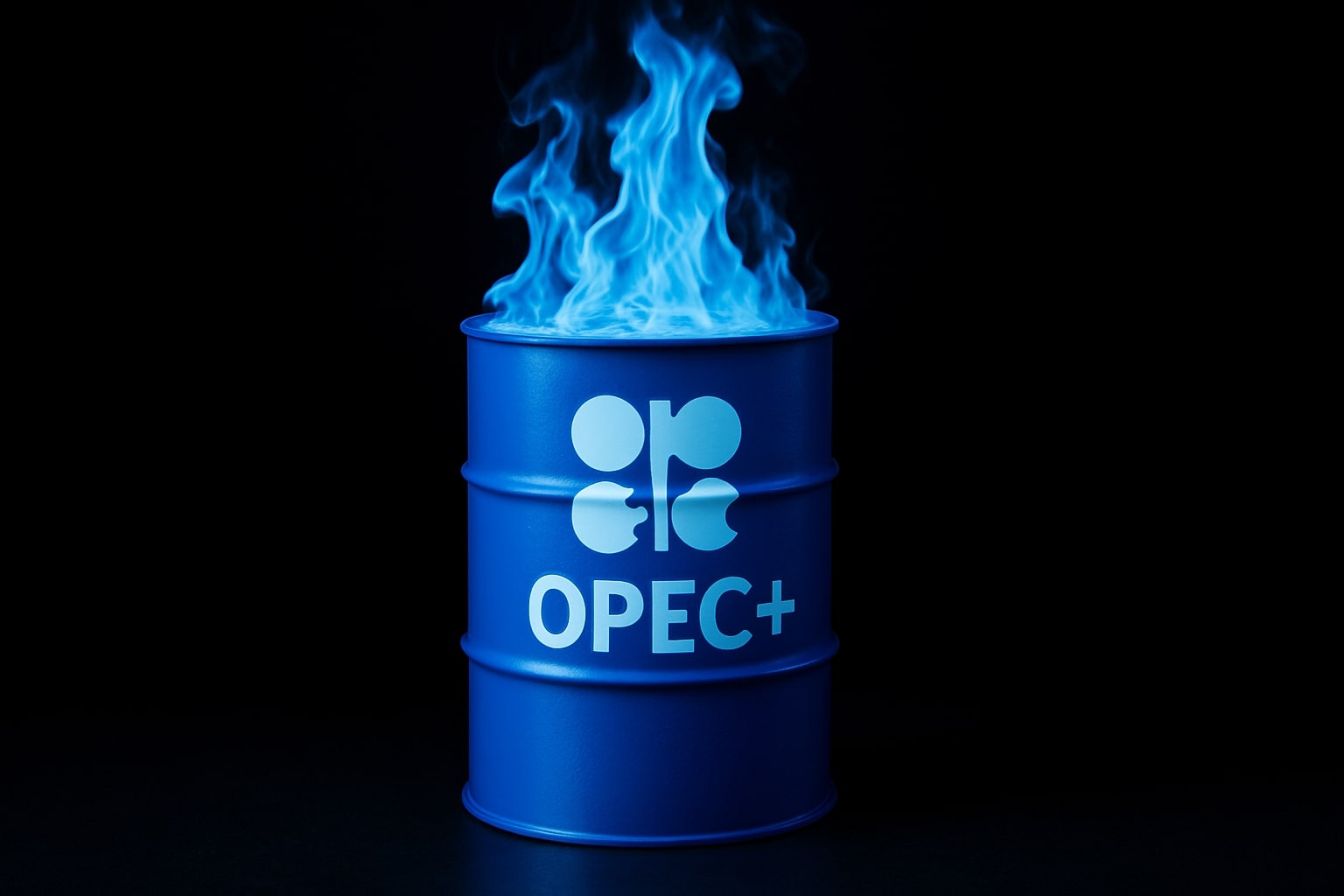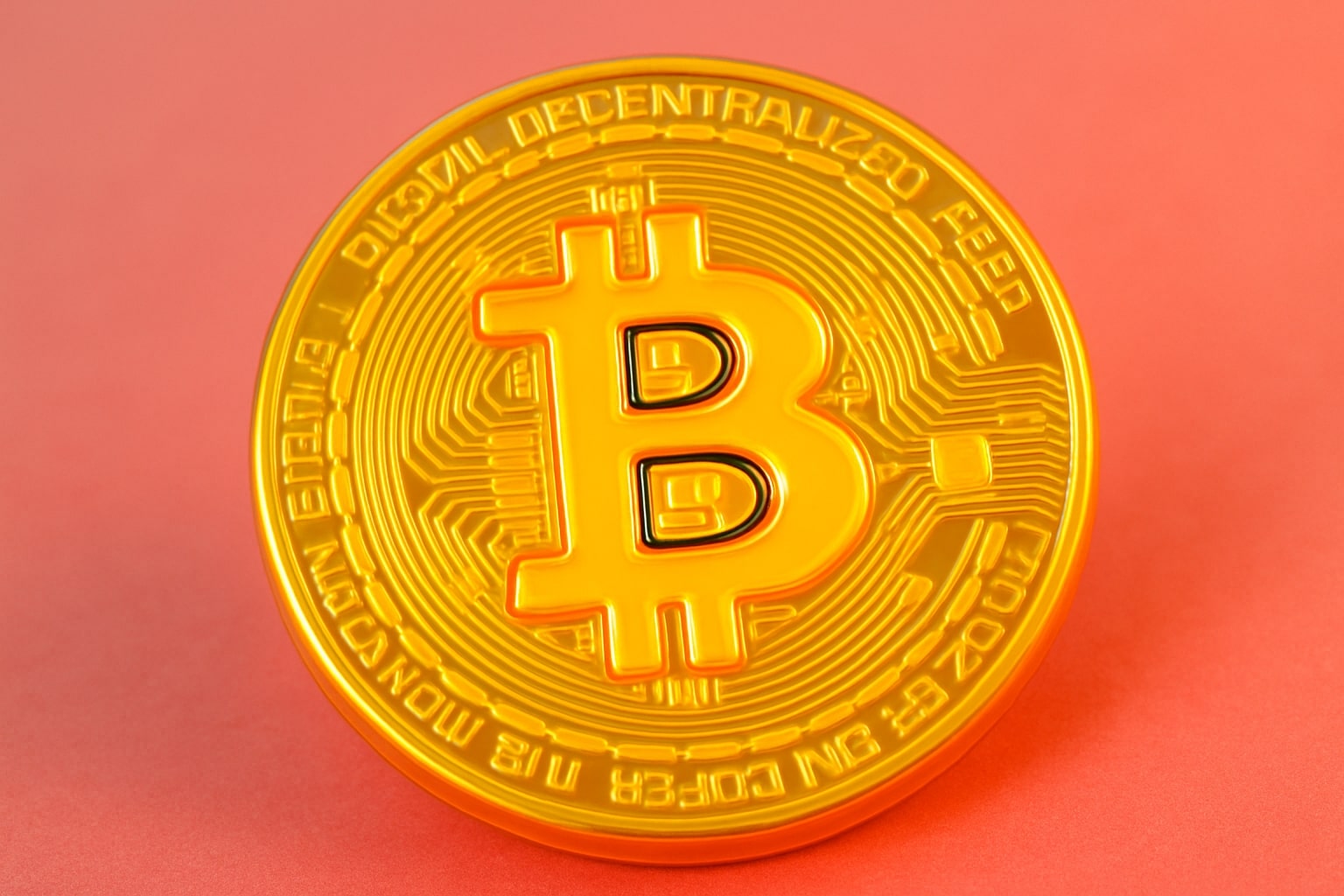
Gold Price Forecast - XAU/USD Hits $4,246 Record as Fed Cut Hopes and Trade War Fears Supercharge XAU/USD
A 60% year-to-date rally drives gold to historic highs, powered by 94% Fed easing odds, record 800-tonne ETF inflows, and relentless central bank accumulation | That's TradingNEWS
Gold (XAU/USD) Extends Its Record-Breaking Rally as Safe-Haven Demand Dominates Global Markets
Gold’s explosive ascent has defied every conventional metric in 2025, surging beyond $4,240 per ounce to new historic highs as investors reposition for a world defined by monetary easing, trade fragmentation, and geopolitical turbulence. The yellow metal has now advanced more than 60% year-to-date, making it one of the strongest-performing major assets globally. The momentum has accelerated following renewed expectations that the Federal Reserve will deliver another 50-basis-point rate cut before year-end, with CME FedWatch placing odds above 94% for additional easing. The rally—once thought to be losing steam near $4,000—has instead gained velocity, lifting the XAU/USD pair firmly into uncharted territory.
This new leg of strength is not purely speculative. It reflects a structural rotation toward hard assets as confidence in fiat resilience erodes. Traders across Europe and Asia have rushed into gold-backed exchange-traded funds, while central banks—especially from emerging markets—are rewriting their reserve playbooks. The result is a synchronized global push that has made gold the ultimate geopolitical hedge and the standout macro performer of 2025.
Fed Easing Bets and Dollar Weakness Amplify the Upside Momentum in XAU/USD
The core driver behind the latest surge is policy divergence. While bond markets now price aggressive Fed cuts, the U.S. dollar has struggled to maintain its defensive appeal. The shift in rate expectations has pushed real yields sharply lower, giving gold a decisive tailwind. Federal Reserve Chair Jerome Powell’s latest remarks on “rising downside risks to employment” were interpreted as confirmation that the central bank’s tightening cycle is over. This has triggered a significant reallocation of capital from cash to non-yielding stores of value such as gold.
Historically, gold prices rise roughly 12–15% in the months following a major Fed pivot, but the 2025 rally has already doubled that pace, fueled by geopolitical crosscurrents. The combination of an impending U.S. rate cut and renewed trade tensions between Washington and Beijing has intensified safe-haven flows. President Trump’s announcement of a 100% tariff on Chinese exports of rare earth materials and magnets reignited fears of an extended trade war, while Beijing’s retaliatory rhetoric only strengthened gold’s bid as investors rushed to hedge against currency volatility and potential disruptions in global supply chains.
Central Bank Accumulation and ETF Inflows Create a Dual Engine for Demand
Unlike speculative booms of the past, this rally is anchored in real demand from institutional sources. UBS’s Wayne Gordon, Head of Investment Advice in APAC, described the trend as “structural rather than cyclical,” pointing to two engines powering the market: sovereign accumulation and ETF inflows. Central banks have been net buyers since early 2022, but this year their appetite has intensified. Their collective purchases have already surpassed 800 tonnes in 2025, almost double the forecasted 400–450 tonnes at the start of the year. This renewed appetite follows years of dollar diversification efforts accelerated by the Russia–Ukraine conflict, which exposed the vulnerability of dollar reserves to sanctions.
At the same time, retail and institutional ETF inflows have surged to record levels. Data from the World Gold Council show that global gold ETFs attracted $64 billion in inflows during the first nine months of 2025, including $26 billion in Q3 alone. The return of ETF demand—after three consecutive years of outflows—marks a turning point in gold’s investor base. With more investors treating gold as a portfolio stabilizer, the metal has transcended its traditional safe-haven role to become a core macro asset in diversified holdings.
Geopolitical Tensions Reinforce the Gold Bid as De-Dollarization Accelerates
The foundation of this rally extends far beyond monetary policy. Structural shifts in global finance are amplifying the bid for physical bullion. Emerging economies led by China and Russia continue to unwind their exposure to U.S. Treasuries in favor of gold, driving what analysts now call the de-dollarization premium. Since 2006, central bank gold holdings in emerging markets have increased 161%, reaching approximately 10,300 tonnes, while the pace of accumulation has sharply accelerated since 2022.
China, in particular, has played an outsized role. As the world’s largest consumer and now one of the top official buyers, its central bank has been steadily adding to reserves amid growing trade friction and currency diversification efforts. Russia’s policy shift toward gold-backed reserves following its exclusion from SWIFT and asset seizures during the Ukraine conflict triggered a global awakening: sovereigns no longer view Western currencies as risk-free. This systemic distrust has created a new form of demand—one based on sovereignty, not speculation.
HSBC Revises Global Gold Forecasts Upward as Fiscal Risks Fuel Long-Term Demand
The speed of gold’s ascent has forced major financial institutions to recalibrate their models. HSBC raised its 2025 average price forecast to $3,355 per ounce from $3,215 and its 2026 forecast to $3,950 from $3,125**, citing a trifecta of safe-haven demand, fiscal instability, and persistent geopolitical risk. The bank highlighted that soaring U.S. deficits and global debt expansion are key structural tailwinds that will sustain gold’s attractiveness even if inflation moderates. Gold’s recent breach of $4,250.89 has validated these upward revisions, as investors increasingly view the metal as a reliable shield against monetary erosion.
However, HSBC warned that if the Fed fails to deliver the expected sequence of rate cuts, the momentum could temporarily stall. Yet even in that scenario, continued central bank demand and ETF inflows would likely cushion downside pressure. The institution’s note emphasized that gold’s risk profile has fundamentally changed—it is now as much a fiscal hedge as it is a monetary one.
Read More
-
US Stock Market Forecast: S&P 500 at 6,827, Dow 48,458 as Fed Cut and Jobs–CPI Data Collide
14.12.2025 · TradingNEWS ArchiveStocks
-
Bitcoin Price Forecast: BTC-USD At $89K As ETF Selling And $70K–$136K Targets Collide
14.12.2025 · TradingNEWS ArchiveCrypto
-
Gold Price Forecast - Gold Around $4,300 As Silver Spike And $4,356 XAU/USD Resistance Collide
14.12.2025 · TradingNEWS ArchiveCommodities
-
USD/JPY Price Forecast - Dollar to Yen at 154–158 Range as BoJ 0.75% Hike and Fed Cut Debate
13.12.2025 · TradingNEWS ArchiveForex
Technical Outlook: Bullish Momentum Dominates as RSI and EMAs Confirm Uptrend
From a technical standpoint, XAU/USD remains deeply entrenched in bullish territory. Gold hit an intraday peak of $4,246 on Thursday, marking a clean break above its prior all-time high near $4,200. The 20-day exponential moving average (EMA) is trending sharply upward at $3,950.15, while the longer-term trendline from the August 22 low at $3,321.50 continues to define a strong ascending channel. The 14-day RSI, which has remained above 60 for an extended period, confirms sustained buying pressure without overextension.
Analysts now identify $4,000 as the new primary support zone, replacing what was once seen as a psychological ceiling. A breakout above $4,300 would likely attract momentum-driven inflows from algorithmic funds and systematic traders targeting $4,500–$4,600 over the next quarter. On the downside, only a decisive break below $3,900 would challenge the current trend, though such a scenario appears remote given the scale of physical demand from both sovereign and ETF channels.
Structural Forces Redefine Gold’s Role in Portfolios
The transformation underway in the gold market is not a mere reaction to short-term uncertainty—it marks a paradigm shift in global asset allocation. As Wayne Gordon of UBS highlighted, an allocation between 5–10% in gold has historically reduced overall portfolio volatility and drawdowns. The renewed conviction among institutions that gold can function as a zero-counterparty-risk asset is reviving its status as a modern-day reserve anchor. Unlike fiat currencies or even government bonds, gold carries no credit risk and cannot be politically frozen, attributes increasingly prized in a world of weaponized finance.
The broader implications stretch beyond macro hedging. As digital assets like Bitcoin face regulatory fragmentation and liquidity challenges, traditional gold is regaining dominance as the ultimate store of trust. The simultaneous inflows into both ETFs and central bank vaults underscore how different investor classes—retail, institutional, and sovereign—are converging around the same thesis: gold is no longer just insurance; it is an active core holding in a world where traditional safe assets are eroding in reliability.
Outlook: Record Momentum Points Toward $4,500 With Buy Bias on XAU/USD
The balance of data—monetary, structural, and technical—supports a continuation of the bullish trend. With Fed rate cut odds near 95%, escalating trade tensions, and ongoing de-dollarization, the setup for gold remains asymmetric to the upside. Analysts now forecast a potential move toward $4,300–$4,500 in the near term as liquidity continues to shift toward non-yielding assets. On the structural horizon, rising fiscal imbalances in major economies and continued central bank diversification suggest that even higher averages through 2026 are plausible.
The broader verdict remains clear: gold’s rally is not a speculative blow-off but a reflection of enduring macro change. The Buy Bias on XAU/USD holds firm as long as prices remain above $4,000 support, with every corrective dip likely to attract institutional inflows. This is not just another bull cycle—it is the re-pricing of gold’s role in the global financial system, now moving beyond safe haven status into the realm of strategic necessity.


















